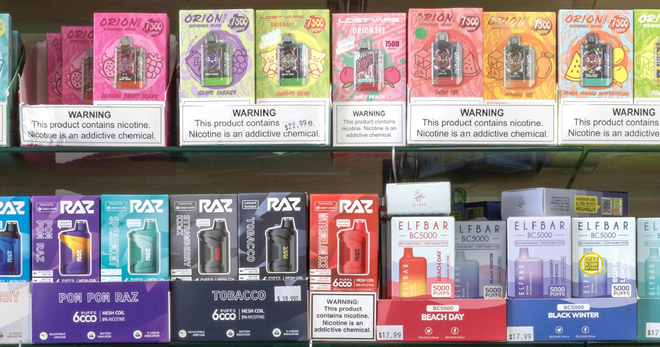How a workplace vaping policy can help employees quit tobacco
With many people likely working to sustain or regain momentum on their New Year’s resolutions to quit tobacco, employers can lend crucial support and make their workplaces healthier in the process.
Vaping pervades the workplace with more than three-fourths (76%) of e-cigarette users vaping at work, triggering the urge to smoke and vape in nearly half of tobacco users, according to Truth Initiative research highlighted in the report “Vaping in the Workplace.” Less than half of surveyed employees reported that their employer has a written policy addressing e-cigarette use, signaling an important opportunity for vape-free workplace policies to better protect employee health.
Support for e-cigarette-free workplaces is high, from e-cigarette users themselves as well as most of the work force. If your workplace doesn’t yet have a tobacco-free policy that includes vaping, updating it to support employees who are trying to quit all forms of tobacco use could make a huge difference.
Workplace vaping triggers tobacco use in others
Nearly half of tobacco users reported workplace vaping as a trigger for smoking and vaping, Truth Initiative research finds. Smokers were roughly twice as likely as e-cigarette users to report that seeing someone vape at work triggered them to smoke, and those who used both cigarettes and e-cigarettes were three times as likely to be triggered to smoke by witnessing someone vape at work, compared to e-cigarette-only users. These findings suggest that vaping in the workplace might undermine the efforts of those trying to quit and even of those who have already done so.

Adding vaping to your tobacco-free workplace policy
If you’re ready to add vaping to your workplace tobacco-free policy, you can get started with the tips and steps below from The EX Program blog, which also appeared on Talent Culture.
- Make your workplace policy comprehensive
Start by ensuring that your no-smoking-at-work policy prevents exposure to secondhand smoke for all your employees, whether they work indoors or outdoors. Take a look at the American Nonsmokers’ Rights Foundation for a model policy that’s easy to follow. - Know your state and local laws
E-cigarettes are regulated at state and local levels, and it’s helpful to know where your state and municipality might stand. The American Nonsmokers’ Rights Foundation has maps with information specific to your company’s location. - Handle smoking and vaping consistently
Your policy should be clearly written and understandable, articulating the same terms for enforcement for e-cigarette users and other types of tobacco users as for cigarette smokers. - Communicate the new policy with employees
Once your newly revised policy is developed, share it with employees in many different shapes and forms to meet your employees where they are: intranet posts, manager talking points and company-wide meetings, for example. It can take multiple attempts for employees to become aware of and comprehend messages from HR teams. - Provide access to quit support
Modifying your existing tobacco-free policy to include vaping may also represent a powerful opportunity to re-engage smokers in a cessation benefit, so take this as a chance to remind smokers of resources already offered by your company. Employees need to know there is tailored support available to help them quit tobacco use.
Finding the right resource
The EX Program from Truth Initiative, developed in collaboration with Mayo Clinic, is an enterprise-level, digital health program for tobacco addiction for employers and health plans. Now helping more than 9.7 million adults around the nation, including through Medicaid plans in Nevada, Iowa, Kentucky, and West Virginia, the EX Program grew out of Truth Initiative's field-leading research and long history of building engaging digital interventions. In 2021, the EX Program expanded its offering to be fully available in Spanish and to include an 8-week supply of Nicotine Replacement Therapy (NRT). It also added a real-time dashboard for clients to view valuable benchmark data tracking enrollment numbers, participant engagement, and more.
A series of Truth Initiative studies published in peer-reviewed journals on the prevalence of vaping in the workplace, employee support for vape-free workplaces, and the need for employer-sponsored quitting support programs are highlighted in our report Vaping in the Workplace.
More in emerging tobacco products
Want support quitting? Join EX Program
By clicking JOIN, you agree to the Terms, Text Message Terms and Privacy Policy.
Msg&Data rates may apply; msgs are automated.


